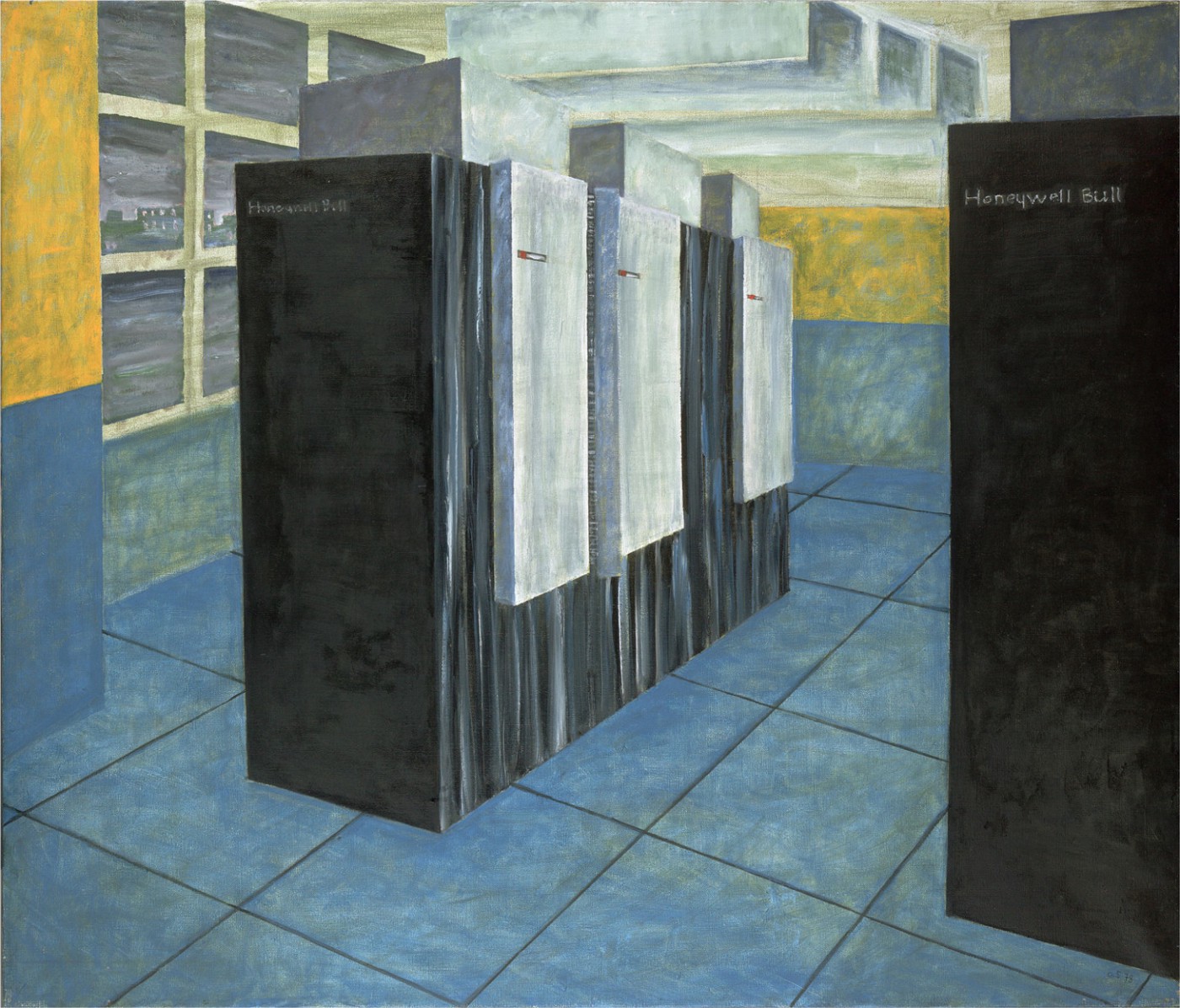In our present age of ambient intelligence, technology is both the furniture and the room it fills: discrete, human-made objects whose social and spatial effects create boundless, indefinite surrounds. The environment is controlled through the obfuscation of tools whose material operating range far exceeds their physical objecthood.

The Swedish Work-Life Center (Arbetslivscentrum), a public research institute operating until 2000, must have had this collapsing dichotomy between technological object and technological ambience in mind when it, in 1977, began a three-year research project examining the increasing presence of computers and automation in the workplace. Anna Sjödahl, a Swedish painter and sculptor invited to contribute to the project, was known in the 1970s chiefly as an artist of the everyday, taking her personal experiences as a mother and working woman as inspiration in works that expressed the prosaic side of womanhood. The Work-Life Center, wanting to explore the effects of computerization on a human scale, commissioned from Sjödahl a series of paintings and drawings to be made on-site at workplaces where computers were seen to have most upset the standing order of things. Sjödahl’s Centraldatorn i Sundsvall (1978), originally exhibited under the title Datahallen i Sundsvall, was one of these works. A companion to a series of sketches and short texts, Centraldatorn was displayed in the Work-Life Center’s Konst och vetenskap och arbetets ära, a traveling exhibition first held in 1982 at Tekniska Museet and then in a number of regional museums in Sweden.
Centraldatorn i Sundsvall, shown for the first time since the artist’s death in 2001 and for the first time at Moderna Museet, takes this balancing act of technological discreteness and indiscreteness, intrusion and ambience, and spins it into an enigmatic representation of the digital world’s relation to the physical. It evokes the furniture-like qualities of computing — our learned ability to mentally neutralize the influence of these machines and their contents, rendering them tame, neutral black boxes — while also using painterly contrast and balance to focus attention on just these black boxes, stripping them of unchallenged domination of the space. Centraldatorn i Sundsvall entreats us to notice these machines and their embodiment of big data.
The Honeywell Bull 6000 mainframe computers depicted in Centraldatorn lived, in reality, at Sweden’s National Insurance Agency (Riksförsäkringsverket) in the ’70s. Stored in their monolithic chasses was the data of every Swedish citizen’s hospitalizations and withdrawals from their national insurance account, alongside other personally sensitive information. As in 2001: A Space Odyssey (1968), which features a number of otherworldly black boxes — silent but nonetheless malicious — Sjödahl’s mainframes express in their appearance similarly unsettling intent. Their overwhelming size and haunting blackness is uncanny, sucking the air out of a composition characterized otherwise by optimistic (albeit sterile) yellow and blue. One feels rightly menaced, or at least perturbed, by the things, their placement quiet and static but their effect hardly so. Sjödahl invokes in her work a fear of surveillance that has percolated through Swedish society since at least 1973, when public outcry over data management precipitated the establishment of Datainspektionen, the world’s first national data-protection agency. Centraldatorn i Sundsvall both reminds us of and criticizes the invisible vacuuming, centralization, and storage of our most sensitive information.
“The development of computer programmes that are meant to work in relation to humans is a problem that requires broad research in the fields of the humanities and the social sciences. Only once this has been recognized can computer technology move from its current manipulative structure to a convivial technology that everyone can use for their own purposes,” suggested Kalle Mäkilä in the Konst och vetenskap catalogue. Coming from an era when computers, briefly but brightly, promised reduced working hours and a rationalized life, Centraldatorn challenged the notion that computerization is straightforwardly beneficial. Flash forward to today, the era of technology that melts inscrutably into our surroundings, when we may have lost the opportunity for the enlightenment Mäkilä described. We collectively take for granted the omnipresence of machines and networks that mine our world (including, impossibly, ambient furniture-as-technology-as-furniture objects such as connected fridges, smart lightbulbs, and machine-intelligent coffeepots), contorting the spaces around them for the purpose of collecting and storing data in server farms just as looming as the machines depicted in Centraldatorn i Sundsvall. A work like Sjödahl’s, reminding us viscerally of the silent but unquiet objects in the room, is both prescient and pressing, even — or especially — today.
This article appears in the Mud Muses — A Rant About Technology exhibition catalogue, published by Moderna Museet and Koenig Books and available here.
Published 2018